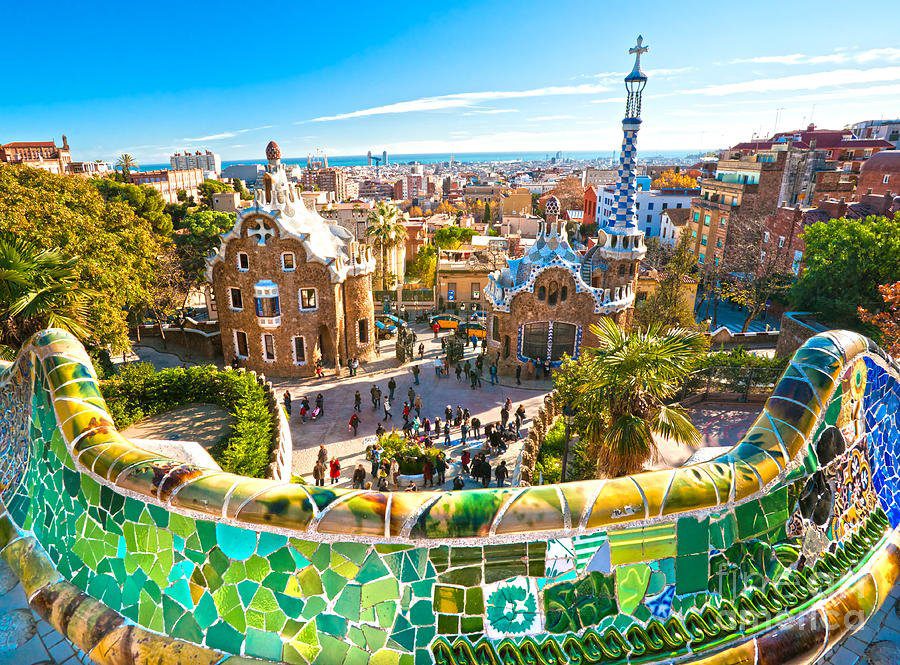Park Güell in Barcelona is one of the most enchanting places to visit in the world. Located in the northern part of the port city, it spans an area of 17.18 hectares. Designed by Antoni Gaudí, the richly decorated gingerbread houses, the colorful main staircase, and the mosaic lizard seem like part of a fairy tale. Walking through the picturesque pine groves and palm alleys, admiring the unique creations of the genius Catalan architect, you will be transported to a world where architectural masterpieces harmoniously coexist with nature.
History of Creation

The creation of Park Güell is the result of the business and friendly relationship between Antoni Gaudí and textile magnate Eusebi Güell, the main sponsor of this project. Their acquaintance began at the Paris World’s Fair. The stand where the Spanish architect presented samples of glass and ceramic products so impressed the businessman that he met with Gaudí and soon after began financially supporting the Catalan artist.
The starting point for the creation of Park Güell (Park Güell) was 1900 when the industrialist purchased a 15-hectare plot of land on a barren hillside with fantastic views of Barcelona. Güell, who returned from the UK at the beginning of the 20th century, aimed to create a garden city in the then-fashionable English style of an ecological residential area. The patron planned to build 62 private villas surrounded by green alleys. According to the pre-prepared contract, future homeowners were not allowed to cut down trees with trunk volumes exceeding six inches.
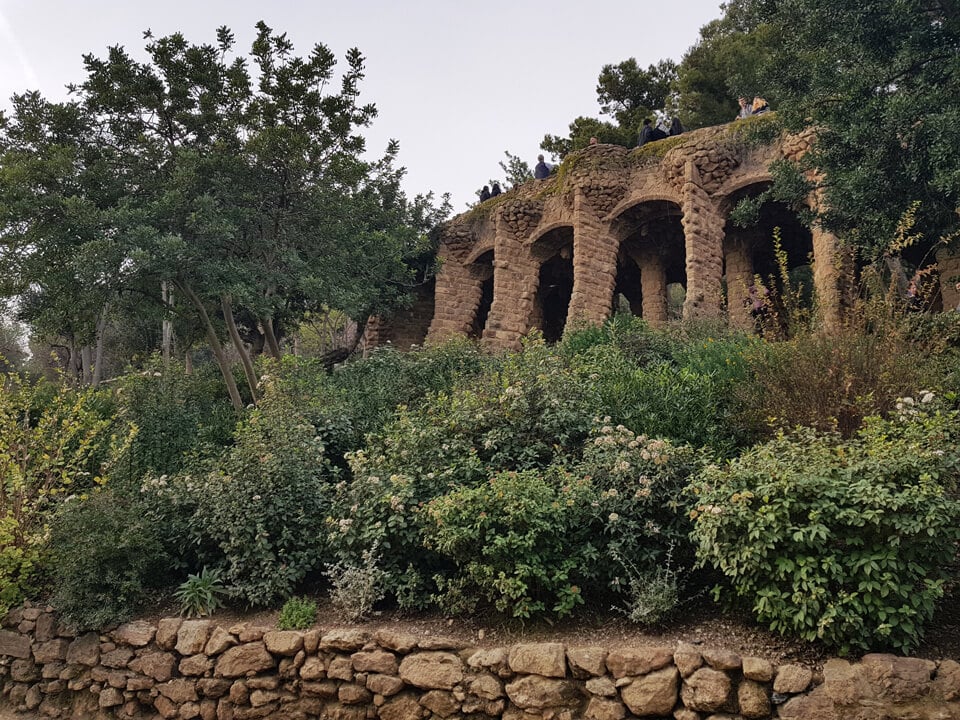
In 1901, hired surveyors began dividing the park territory into plots, and Gaudí took on the task of preparing the architectural concept. The second phase of construction included the formation of roads and the erection of three mansions. Between 1910 and 1913, the central entrance with unique pavilions, the curved bench, and the Hall of “100 Columns” appeared. Unfortunately, 1914 marked the end of construction and the collapse of the project. The idea of a “green paradise” failed spectacularly.
Wealthy citizens did not line up for homes in the estate located on the outskirts of Barcelona. The situation was not saved even by the three wonderful cottages built by that time. In 1918, Eusebi Güell passed away, and three years later, his heirs sold the land to the municipal administration of Barcelona. In 1926, the city park was opened to the public.
Gaudí’s Architecture and Rich Imagination
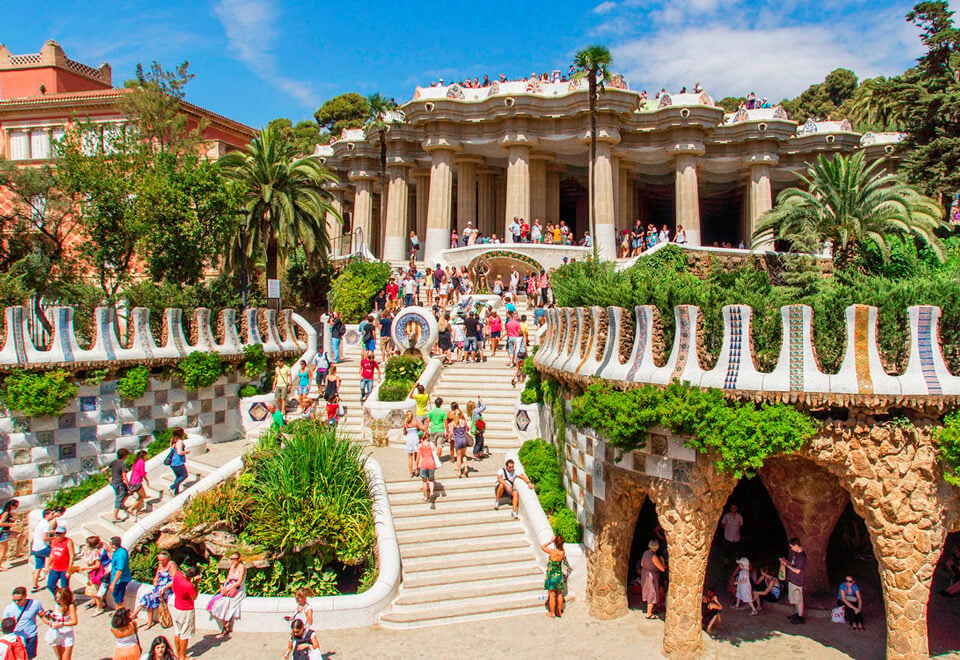
Today, visitors to Park Güell can admire Gaudí’s creations, characterized by a symbiosis of Catalan modernism and symbolism. The architect designed incredibly complex structures filled with mythological elements and historical allusions. According to the author’s plan, all buildings should be hidden behind a two-meter fortress wall made of local stones and crowned with medallions bearing the inscription “Park Güell.”
The uneven landscape of the hill led to the creation of winding streets in the form of viaducts and two-level alleys. Compositions, fountains, and sculptures draw visitors into a world of mysterious grottoes, wild jungles, and fairy-tale creatures. The details of the buildings, distinguished by unusual shapes and bright colors, perfectly harmonize with the surrounding nature. In decorating the architectural objects, Gaudí and his assistant Josep Maria Jujol used unconventional materials: broken tiles and waste from ceramic factories.
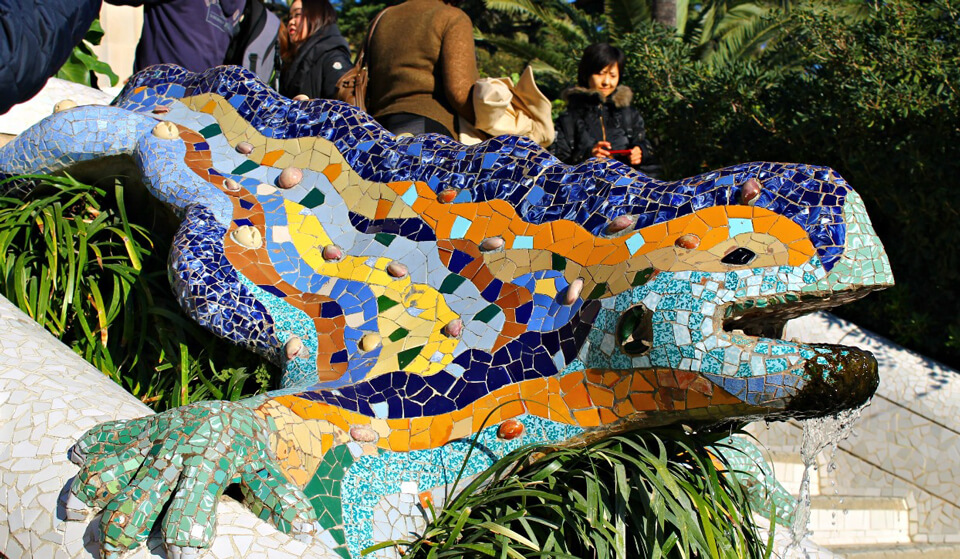
Despite their fragile appearance, all structures are extraordinarily strong due to the multilayered construction principle. For example, the tower at the main entrance consists of layers of reinforcement, concrete, and brickwork. This method was used in the construction of all park objects.
Gingerbread Houses
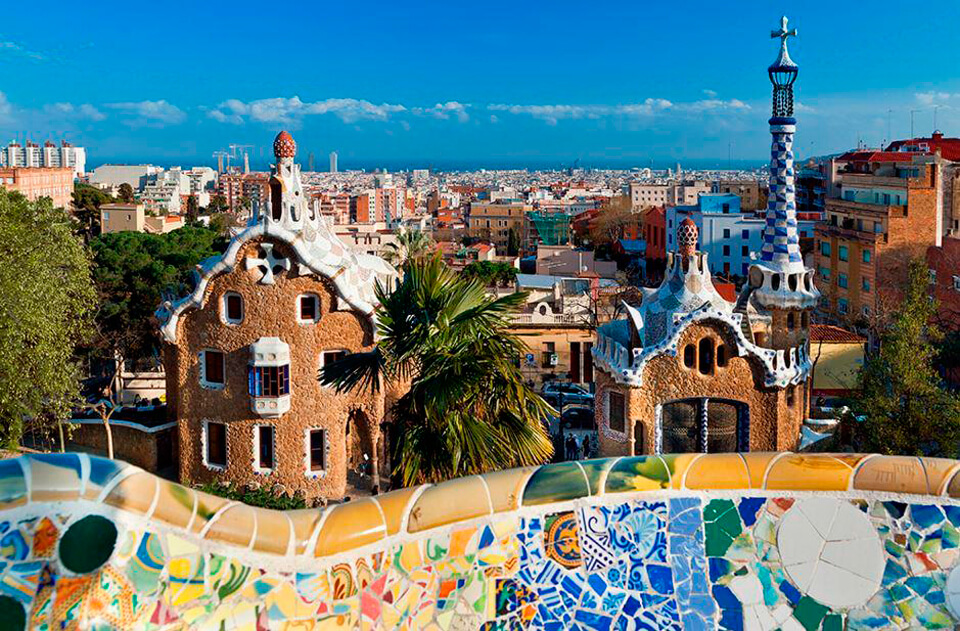
The most complete part of Park Güell is located at the main entrance. Visitors are greeted by two extraordinary houses, plunging them into a world of fantasy and magical tales. It is said that Gaudí got the idea for their creation from the opera “Hansel and Gretel” by German composer Humperdinck. The appearance of gingerbread pastries covered with icing is given to the buildings by trencadís, a special mosaic technique that uses small pieces of broken ceramic tiles.
Although the houses differ from each other, they are designed in the same style, characterized by rounded shapes, curved roofs, the absence of right angles, and decoration with raw stone. The carved domes crowning the buildings resemble mushroom caps adorned with spots. Upon closer inspection, you will see that these spots are images of cups – symbols that Gaudí used to signify his desire to give up coffee.
It was intended that one of the whimsical houses, whose white-and-blue tower is crowned with a cross, would house the park administration, while the larger house would be the gatekeeper’s residence. Today, the service building hosts souvenir shops and a cafe, and the gatekeeper’s house is part of the city’s historical museum.
Hall of “100 Columns”
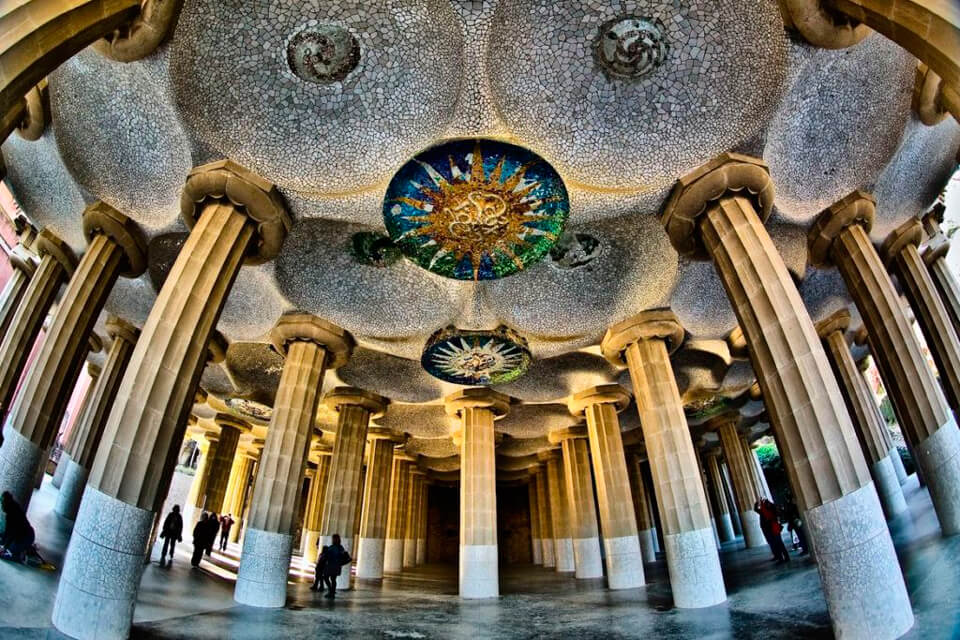
Just above the gingerbread houses begins the bifurcated grand staircase leading to the Hall of “100 Columns.” At its base is a fountain-grotto with a snake’s head enclosed in a round medallion. A bit higher is the emblem of Barcelona – a figure of a salamander decorated with a mosaic of glass and porcelain. Climbing the stairs, you encounter a Doric hall without walls, resembling an ancient Greek temple.
The six-meter columns (there are actually 86) are arranged in a honeycomb pattern and serve as the foundation for the ceiling, decorated with shards and four colorful glass ceiling lights symbolizing the seasons. The oval roof of the building is also an esplanade, originally intended as a market square. Today, the terrace above the Hall of “100 Columns” is the central and most crowded place in Park Güell. From here, you have a stunning view of the capital of Catalonia.
Curved Bench
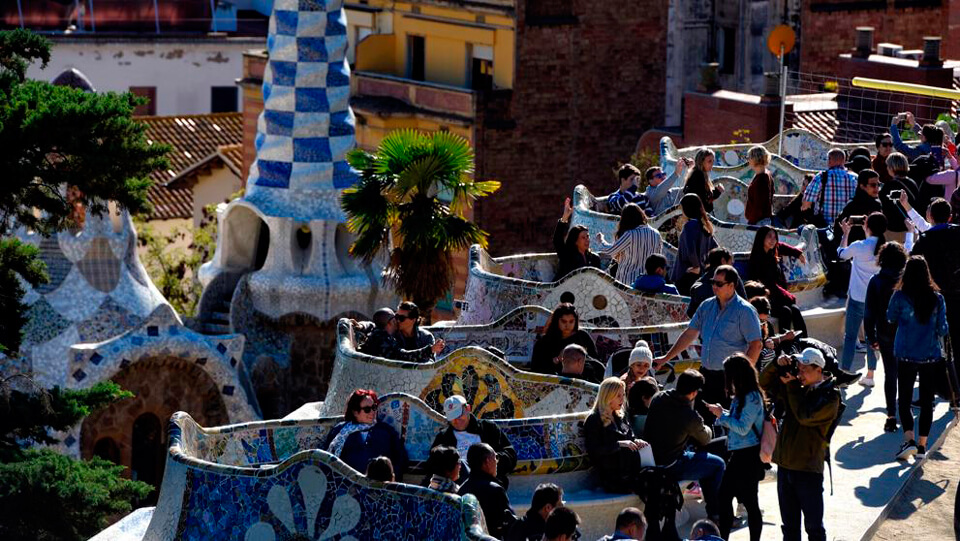
But not only the mesmerizing view of the city below and the opportunity to take numerous photos attract tourists to the roof of the Doric hall. Here, smoothly framing the entire area, weaves a bench made of separate concrete blocks and clad with ceramic tiles, shards of clay products, and glass bottles. Upon closer inspection, the abstract pattern transforms into magical figures, mysterious drawings, and images of zodiac signs.
According to the master’s plan, the curved shape of the endless bench not only accommodated more people wanting to sit and rest but also created an intimate atmosphere for one-on-one conversations. Notice the perfect notches of the seats that follow the contours of the human spine. To achieve this effect, the clever architect stripped the workers naked and had them sit on the still-wet mortar.
The Three Purchased Mansions
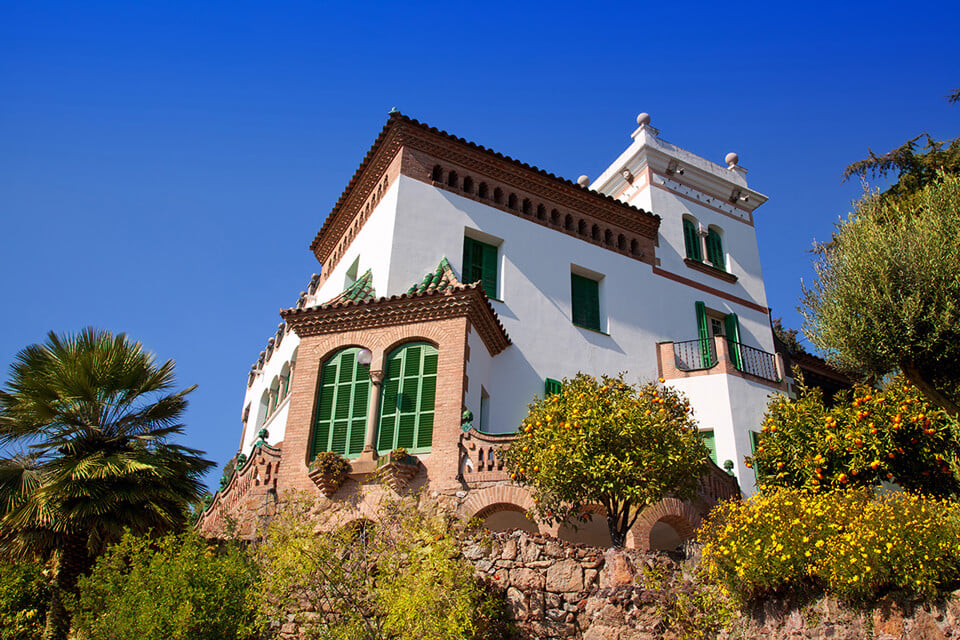
In the unfinished estate, there are three houses, one of which was bought by the lawyer M. Trias-i-Domenec, a friend of the industrialist and architect. The building project was commissioned from architect Juli Batllevell, and Gaudí himself chose the site for the construction. The elegant white building with green shutters can be seen if, standing on the terrace of the Hall of “100 Columns,” you turn your back to the city and look to the right. The Trias estate, surrounded by a green lawn, still belongs to his descendants today.
The second mansion was bought by Güell in 1910, who made it his residence. Later, the building became a municipal school. The third four-story villa, adorned with a pink spire, was bought by Antoni Gaudí, where he lived until 1925. The structure was designed by his student Francesc Berenguer. In 1963, the organization “Friends of Gaudí” opened a museum in the mansion. The collection consists of items belonging to the genius architect: personal belongings and furniture. Here you can also see sketches of projects that never came to life.
Park Güell Today
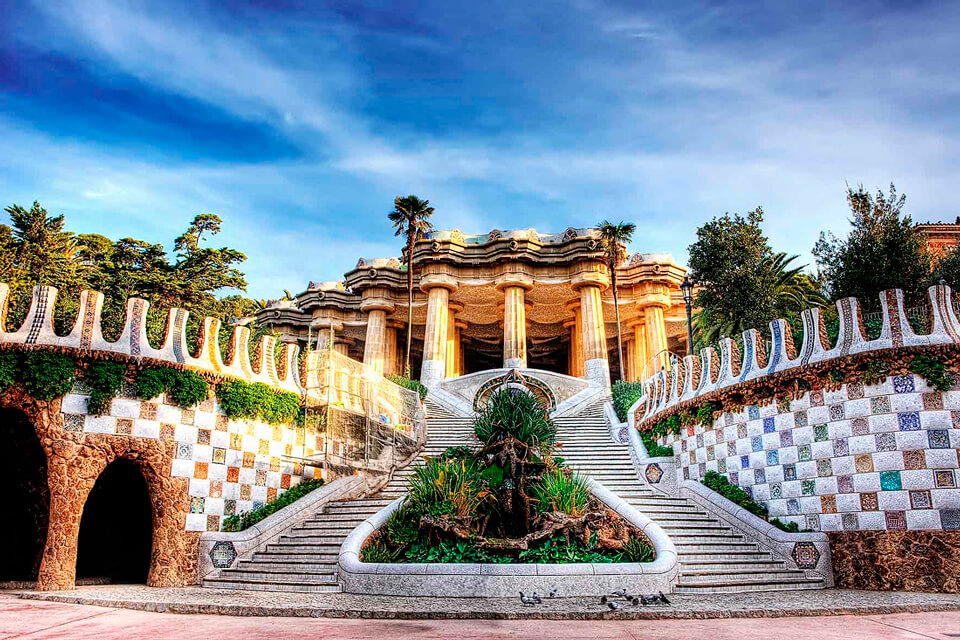
In 1962, the entire park area received the status of an artistic monument, and seven years later, it became a national heritage site. In 1984, Park Güell, along with many works by the greatest Catalan master, was added to the UNESCO World Heritage List for protection.
Today, the park is an interesting attraction in Barcelona and a favorite place for locals to relax. Here, on the hilltop, where the air is much cleaner than in other areas of the southern capital of Spain, you can wander along the shady paths, listen to the birds singing in the alley, or take shelter from the rain in the arched tunnel. Until 2013, anyone could enter the park for free, but the huge influx of tourists (over 4 million people a year) forced the city authorities to limit entry and charge a fee. Currently, about 95% of the park area is freely accessible.
Operating Hours and Ticket Prices
Park hours vary depending on the season:
- From 28.10 to 24.03 – from 8:30 to 18:15 (until 19:00 from 17.02)
- From 25.03 to 29.04 and from 27.08 to 27.10 – from 8:00 to 20:30
- From 30.04 to 26.08 – from 8:00 to 21:30
Closed on 01.01, 25.12, and 26.12.
To enter the Monumental Zone, which includes the gingerbread houses, the curved bench, and the Hall of “100 Columns,” you need to buy a ticket for a specific time slot (or within 30 minutes after). Entry is limited to 400 visitors every half-hour, creating queues at the ticket office. We recommend ordering tickets online, where they are 1 euro cheaper than the base price.
Ticket rates:
- Adults: €8.50
- Children 7-12 years old: €6.00
- Children 0-6 years old: €0.00 (with a free ticket)
- Adults over 65 and disabled: €6.00
Before your trip, check the visitor information on the official website: www.parkguell.cat.
Location and How to Get There
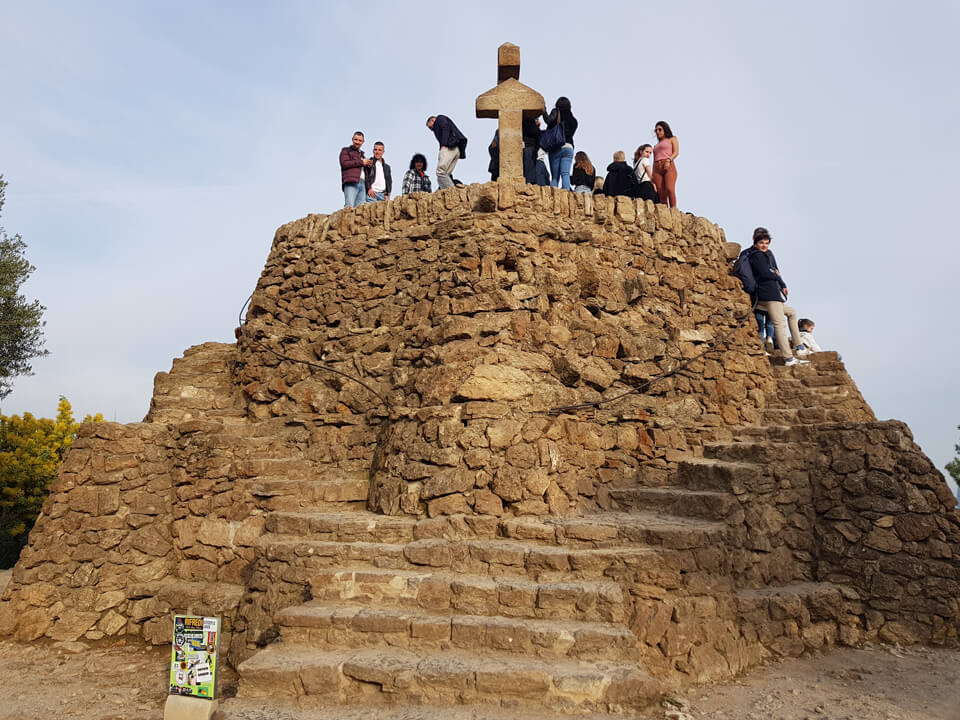
Park Güell is hidden in the northern part of Barcelona in the Gracia district. This area of the city has a hilly terrain, so getting there is not easy. Due to the size and location of the attraction, try to plan at least half a day for your visit. You can reach the park area by public transport:
- Bus: Routes 24, 32, H6, 116 to the Travessera de Dalt stop, and tourist buses Bus Touristic or Barcelona City Tour to the Park Guell stop.
- Metro: Green line L3:
- To the Lesseps stop. Then go up Travessera de Dalt Street until you see the hard-to-pronounce Avinguda del Santuari de Sant Josep de la Muntanya on the left. Climb it to the intersection with Carrer d’Ot, where you can see the main entrance. The walk takes 15-20 minutes.
- To the Vallcarca stop. Walk along Av. De Vallcarca for four blocks, then turn left onto Baixada de la Gloria, where there are escalators leading to the side entrance. Travel time is 12-15 minutes.
Exact park address: Carrer d’Olot, 13, 08024 Barcelona.

